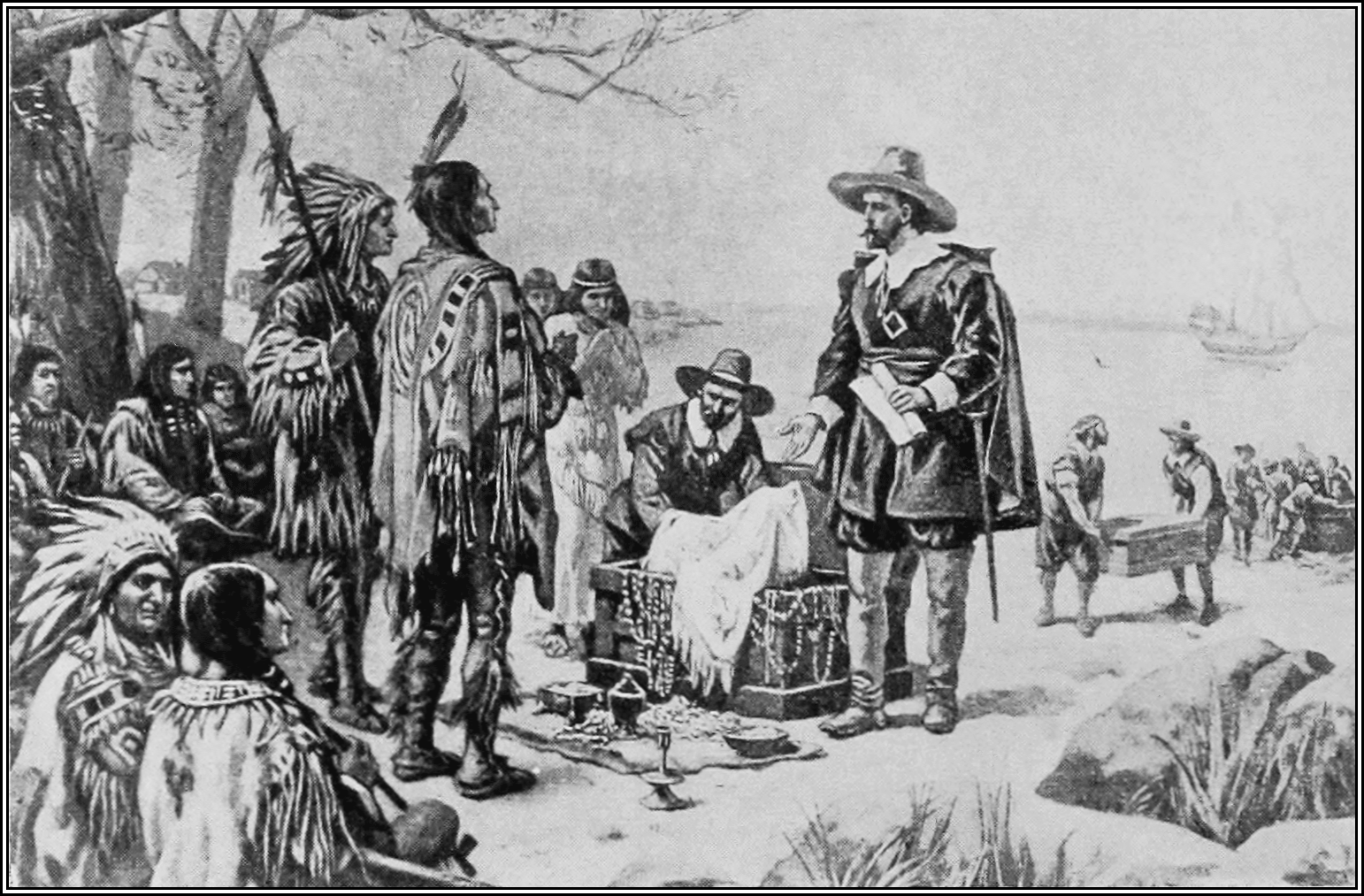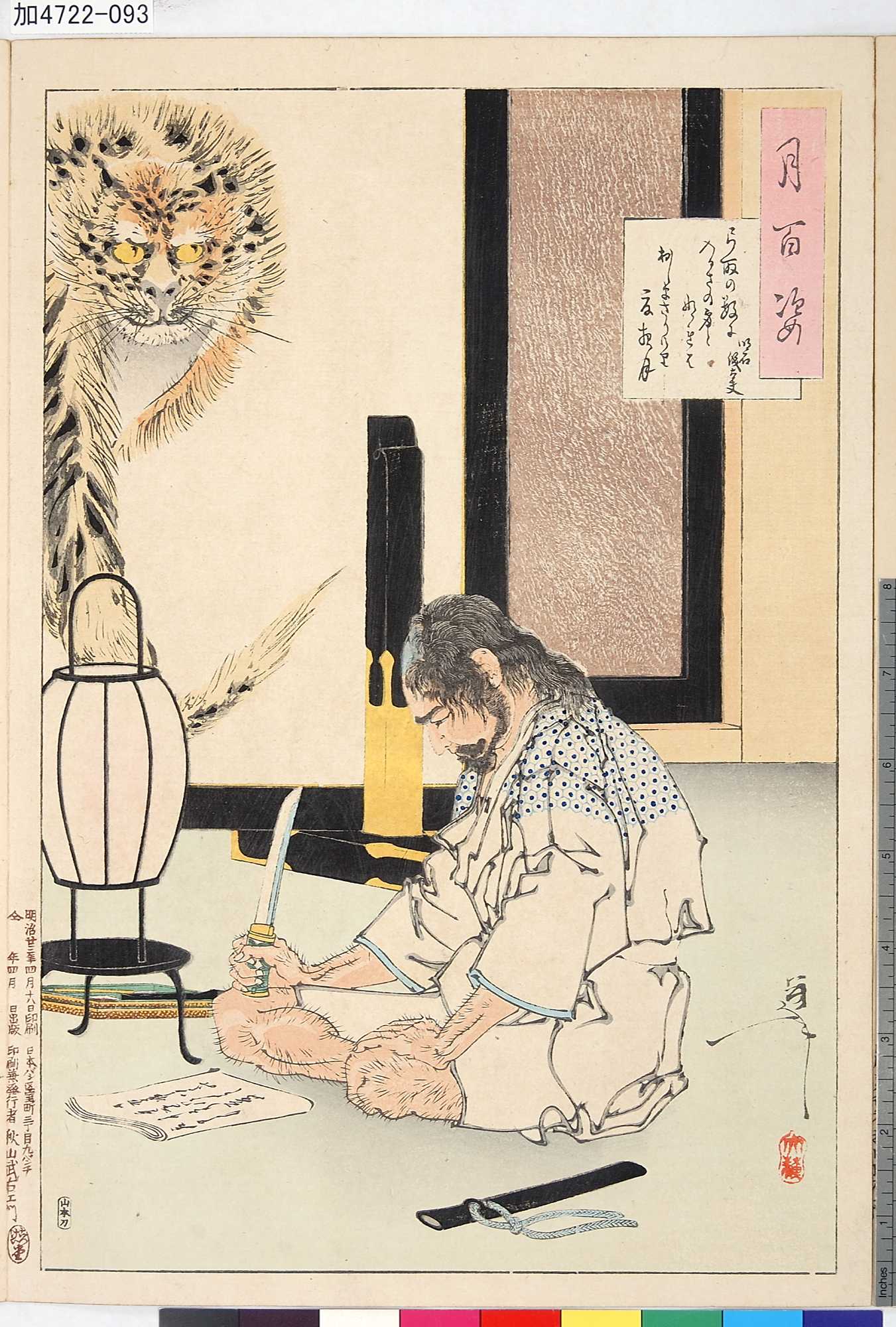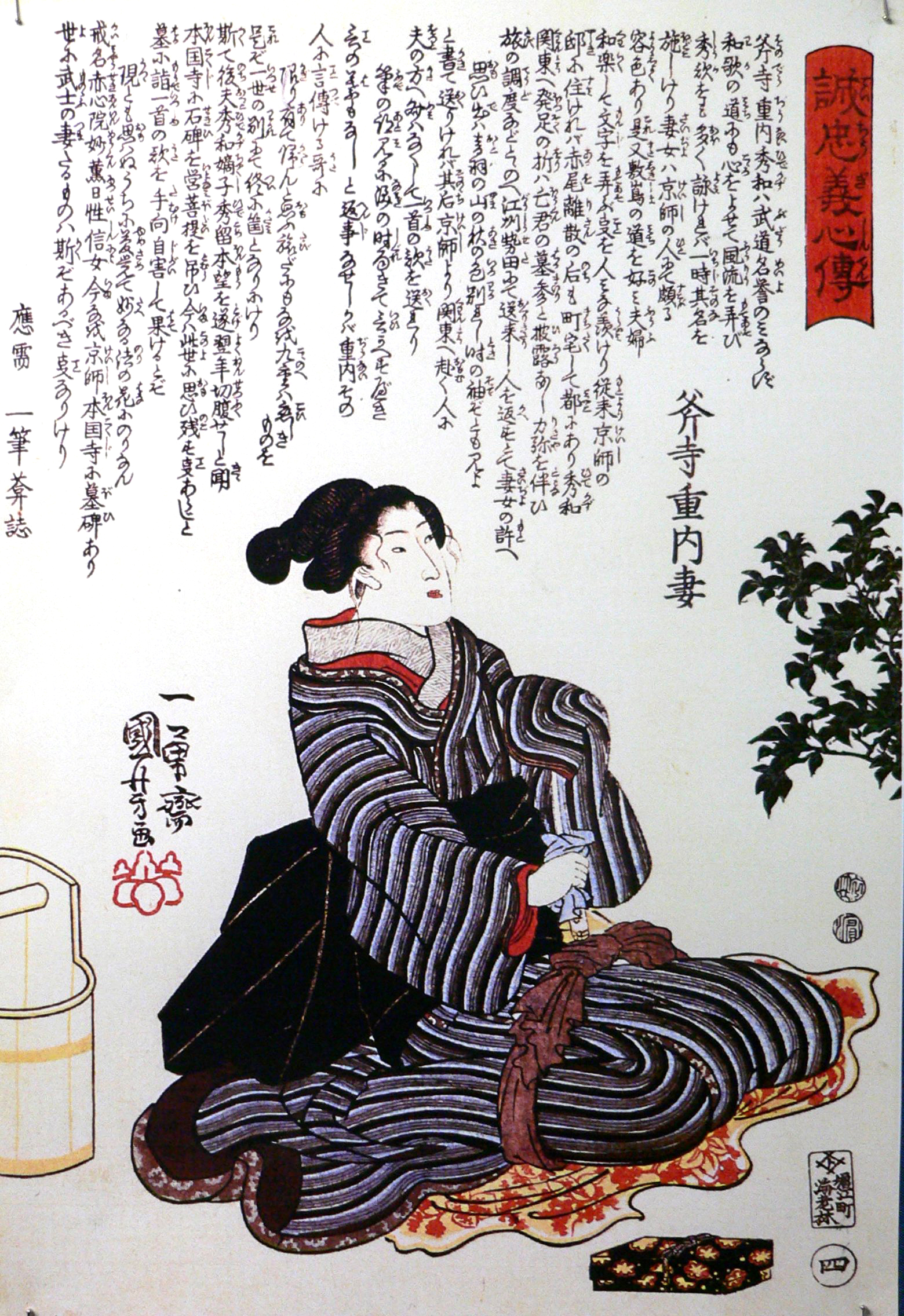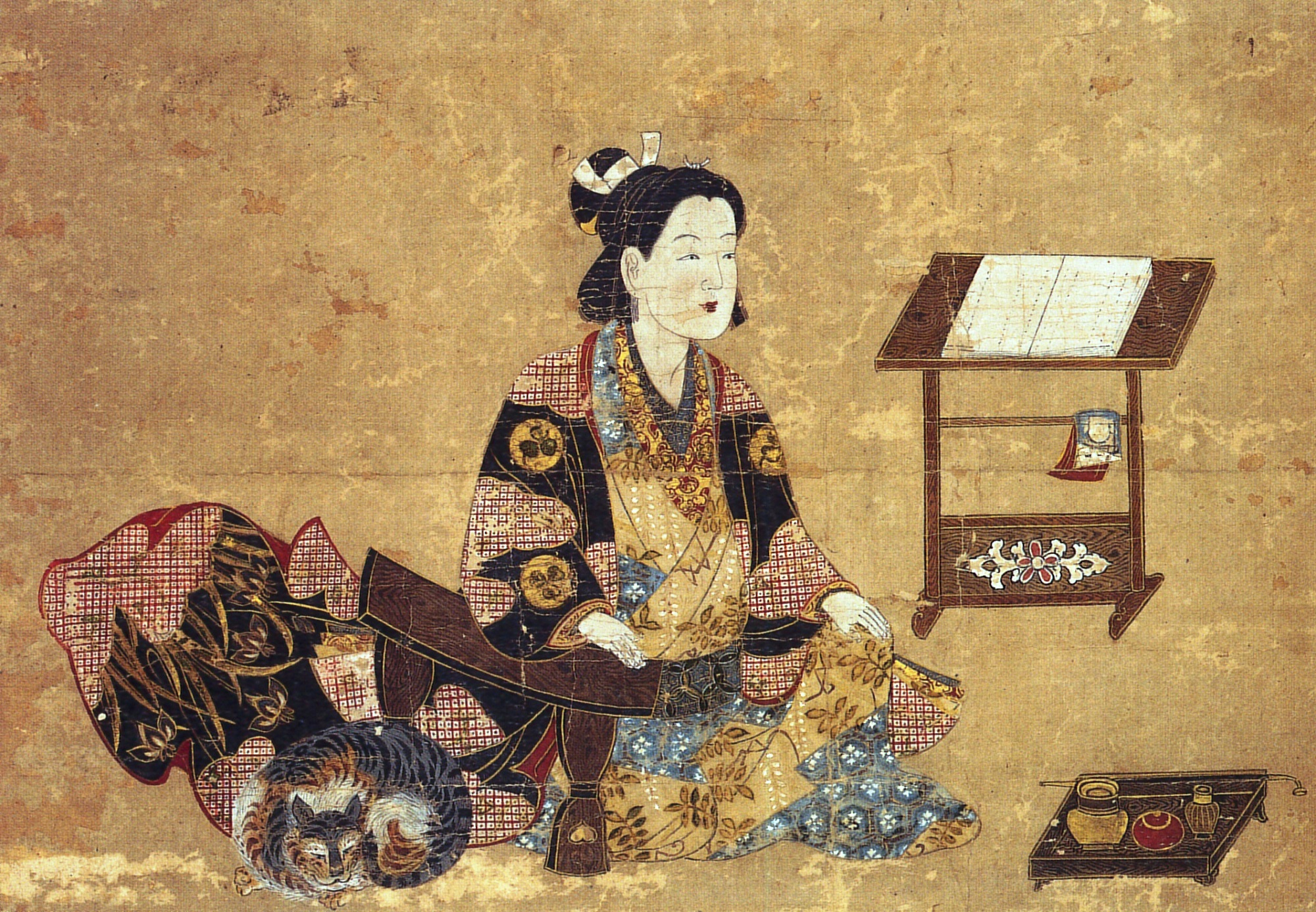|
Miyamoto Mikinosuke
was a retainer of the Japanese clan of Honda during the Edo period of Japan. Mikinosuke was famous for being the first adopted son of the famous swordsman Miyamoto Musashi. Biography Early life Mikinosuke was the third son of Nakagawa Shimanosuke. Shimanosuke served Mizuno Katsunari, a near vassal of Tokugawa Ieyasu who was Musashi's commander during the siege of Osaka castle. It is almost certain that Shimanosuke died during the siege and it is likely that Musashi took custody of Mikinosuke as well as his younger brother Kurōtarō afterwards. Possibly due to a friendship between the men. Afterwards it appears their adopted father brought them to Hirafuku, where Musashi's stepmother Yoshiko was living with her husband, Tasumi Masahisa. Another document also states that Mikinosuke was the grandson of Shinmen Sokan who was a cousin of Musashi. Career Sometime after 1617 Mikinosuke entered the service of the ''daimyō'' Honda Tadatoki who was the son of Honda Tadamasa whom ... [...More Info...] [...Related Items...] OR: [Wikipedia] [Google] [Baidu] |
Japanese Language
is the principal language of the Japonic languages, Japonic language family spoken by the Japanese people. It has around 123 million speakers, primarily in Japan, the only country where it is the national language, and within the Japanese diaspora worldwide. The Japonic family also includes the Ryukyuan languages and the variously classified Hachijō language. There have been many Classification of the Japonic languages, attempts to group the Japonic languages with other families such as Ainu languages, Ainu, Austronesian languages, Austronesian, Koreanic languages, Koreanic, and the now discredited Altaic languages, Altaic, but none of these proposals have gained any widespread acceptance. Little is known of the language's prehistory, or when it first appeared in Japan. Chinese documents from the 3rd century AD recorded a few Japanese words, but substantial Old Japanese texts did not appear until the 8th century. From the Heian period (794–1185), extensive waves of Sino-Ja ... [...More Info...] [...Related Items...] OR: [Wikipedia] [Google] [Baidu] |
Honda Tadatoki
was a Japanese ''daimyō'' of the early Edo period. Tadatoki was born as the eldest son of Honda Tadamasa. His mother Kumahime was a granddaughter of Tokugawa Ieyasu and Oda Nobunaga. In 1616, Tadatoki married Senhime, another granddaughter of Ieyasu, and who had been married to Toyotomi Hideyori before Hideyori's death the Siege of Osaka. As a dowry of his new bride, Tadatoki received 100,000 ''koku''. Tadatoki also sponsored the swordsman Miyamoto Musashi for a time. Musashi taught swordsmanship to Tadatoki's retainers; Musashi's adopted son Mikinosuke served Tadatoki as a page. Tadatoki died of tuberculosis in 1626. Miyamoto Mikinosuke committed ''junshi'' soon afterward, choosing to follow his lord in death Family * Father: Honda Tadamasa (1575-1631) * Mother: Kumahime * Wife: Senhime , or Lady Sen, was the eldest daughter of the ''shōgun'' Tokugawa Hidetada and later the wife of Toyotomi Hideyori. She was remarried to Honda Tadatoki after the death of her firs ... [...More Info...] [...Related Items...] OR: [Wikipedia] [Google] [Baidu] |
1626 Deaths
Events January–March * January 7 – Polish-Swedish War: Battle of Wallhof in Latvia – Gustavus Adolphus, King of Sweden, defeats a Polish army. * January 9 – Peter Minuit sails from Texel Island for America's New Netherland colony, with two ships of Dutch emigrants. * February 2 – King Charles I of England is crowned, but without his wife, Henrietta Maria, who declines to participate in a non-Catholic ceremony. * February 5 – The Huguenot rebels and the French government sign the Treaty of Paris, ending the second Huguenot rebellion. * February 10 – Battle of Ningyuan: In Xingcheng in China, after an 8-day battle, Ming dynasty commander Yuan Chonghuan defeats the much larger force of Manchu leader Nurhaci, who dies soon after and is succeeded by Huang Taiji. * February 11 – Emperor Susenyos of Ethiopia and Patriarch Afonso Mendes declare the primacy of the Roman See over the Ethiopian Church, and Roman Catholicism ... [...More Info...] [...Related Items...] OR: [Wikipedia] [Google] [Baidu] |
1604 Births
Sixteen or 16 may refer to: *16 (number) *one of the years 16 BC, AD 16, 1916, 2016 Films * '' Pathinaaru'' or ''Sixteen'', a 2010 Tamil film * ''Sixteen'' (1943 film), a 1943 Argentine film directed by Carlos Hugo Christensen * ''Sixteen'' (2013 Indian film), a 2013 Hindi film * ''Sixteen'' (2013 British film), a 2013 British film by director Rob Brown Music * The Sixteen, an English choir * 16 (band), a sludge metal band * Sixteen (Polish band), a Polish band Albums * ''16'' (Robin album), a 2014 album by Robin * 16 (Madhouse album), a 1987 album by Madhouse * ''Sixteen'' (album), a 1983 album by Stacy Lattisaw *''Sixteen'' , a 2005 album by Shook Ones * ''16'', a 2020 album by Wejdene Songs * "16" (Sneaky Sound System song), 2009 * "Sixteen" (Thomas Rhett song), 2017 * "Sixteen" (Ellie Goulding song), 2019 *" Six7een", by Hori7on, 2023 *"16", by Craig David from ''Following My Intuition'', 2016 *"16", by Green Day from ''39/Smooth'', 1990 *"16", by Highly Suspect ... [...More Info...] [...Related Items...] OR: [Wikipedia] [Google] [Baidu] |
Japanese Swordfighters
Japanese may refer to: * Something from or related to Japan, an island country in East Asia * Japanese language, spoken mainly in Japan * Japanese people, the ethnic group that identifies with Japan through ancestry or culture ** Japanese diaspora, Japanese emigrants and their descendants around the world * Japanese citizens, nationals of Japan under Japanese nationality law ** Foreign-born Japanese, naturalized citizens of Japan * Japanese writing system, consisting of kanji and kana * Japanese cuisine, the food and food culture of Japan See also * List of Japanese people * * Japonica (other) * Japanese studies , sometimes known as Japanology in Europe, is a sub-field of area studies or East Asian studies involved in social sciences and humanities research on Japan. It incorporates fields such as the study of Japanese language, history, culture, litera ... {{disambiguation Language and nationality disambiguation pages ... [...More Info...] [...Related Items...] OR: [Wikipedia] [Google] [Baidu] |
Settsu Province
was a province of Japan, which today comprises the southeastern part of Hyōgo Prefecture and the northern part of Osaka Prefecture. It was also referred to as or . Osaka and Osaka Castle were the main center of the province. Most of Settsu's area comprises the modern day cities of Osaka and Kōbe. History During the Sengoku period, the Miyoshi clan ruled Settsu and its neighbors, Izumi and Kawachi, until they were conquered by Oda Nobunaga. The provinces were ruled subsequently by Toyotomi Hideyoshi. The regents of Hideyoshi's son soon quarreled, and when Ishida Mitsunari lost the Battle of Sekigahara, the area was given to relatives of Tokugawa Ieyasu. It was from then on divided into several domains, including the Asada Domain. Sumiyoshi taisha was designated as the chief Shinto shrine ('' ichinomiya'') for the province. [...More Info...] [...Related Items...] OR: [Wikipedia] [Google] [Baidu] |
Seppuku
, also known as , is a form of Japanese ritualistic suicide by disembowelment. It was originally reserved for samurai in their code of honor, but was also practiced by other Japanese people during the Shōwa era (particularly officers near the end of World War II) to restore honor for themselves or for their families. As a samurai practice, ''seppuku'' was used voluntarily by samurai to die with honor rather than fall into the hands of their enemies (and likely be tortured), as a form of capital punishment for samurai who had committed serious offenses, or performed because they had brought shame to themselves. The ceremonial disembowelment, which is usually part of a more elaborate ritual and performed in front of spectators, consists of plunging a short blade, traditionally a '' tantō'', into the belly and drawing the blade from left to right, slicing the belly open. If the cut is deep enough, it can sever the abdominal aorta, causing death by rapid exsanguination. One ... [...More Info...] [...Related Items...] OR: [Wikipedia] [Google] [Baidu] |
Miyata Kanbei
Miyata is a Japanese manufacturer of bicycles, The company has been in operation since 1890. Miyata was also one of the first producers of motorcycles in Japan under the name Asahi. The Asahi AA was the first mass-produced motorcycle in Japan. Miyata claims to have been the first Japanese manufacturer of flash welding, flash-butt welded frame tubes (1946) and the first to use powder coating, electrostatic painting (1950). History Miyata was founded by Eisuke Miyata (宮田栄助 1840-1900), a bowyer and engineer from Tokyo who also made components for rickshaws. Eisuke's second son, Eitarō, apprenticed in a local munitions facility and later earned a degree in mechanical engineering from Kyoto University. In 1874, Eisuke moved the family to Shiba, Minato, Tokyo, Shiba and in 1881 opened Miyata Manufacturing in Kyōbashi, Tokyo. The factory produced guns for the Imperial Japanese Army including the Murata rifle, and knives for the Imperial Japanese Navy, Navy. In 1889, a fo ... [...More Info...] [...Related Items...] OR: [Wikipedia] [Google] [Baidu] |
Jisei
The death poem is a genre of poetry that developed in the literary traditions of the Sinosphere—most prominently in Japan as well as certain periods of Chinese history, Joseon Korea, and Vietnam. They tend to offer a reflection on death—both in general and concerning the imminent death of the author—that is often coupled with a meaningful observation on life. The practice of writing a death poem has its origins in Zen Buddhism. It is a concept or worldview derived from the Buddhist teaching of the , specifically that the material world is transient and , that attachment to it causes , and ultimately all reality is an . These poems became associated with the literate, spiritual, and ruling segments of society, as they were customarily composed by a poet, warrior, nobleman, or Buddhist monk. The writing of a poem at the time of one's death and reflecting on the nature of death in an impermanent, transitory world is unique to East Asian culture. It has close ties with Buddhism, ... [...More Info...] [...Related Items...] OR: [Wikipedia] [Google] [Baidu] |
Junshi
refers to the medieval Japanese act of vassals committing suicide for the death of their lord. Background The practice is described by Chinese chronicles, describing the inhabitants of the Japanese archipelago, going as far back as the third century, according to the ''Records of the Three Kingdoms'', where more than a hundred servants were said to follow Queen Himiko in death. The ''Nihon Shoki'' records a decree in 646 that forbade ''junshi'', but it continued to be practiced for centuries afterward. Under the Tokugawa shogunate (1603–1868), battle and war were almost unknown, and ''junshi'' became quite popular with vassals even when their masters died naturally, or in some other way had not met a violent end. There were no fixed rules for ''junshi'', and to some extent it depended on the circumstances, the importance of the lord and the esteem in which he was held by his followers, and the manner of his death. ''Junshi'' could also be carried out irrespective of whet ... [...More Info...] [...Related Items...] OR: [Wikipedia] [Google] [Baidu] |
Senhime
, or Lady Sen, was the eldest daughter of the ''shōgun'' Tokugawa Hidetada and later the wife of Toyotomi Hideyori. She was remarried to Honda Tadatoki after the death of her first husband. Following the death of her second husband, she later became a Buddhist nun under the name of . Biography Early life She was born in 1597 as the eldest daughter of the then-daimyo and later ''shōgun'' Tokugawa Hidetada and his wife Oeyo during the Warring-States period of Japanese history. Her paternal grandfather was the founder of the Tokugawa shogunate, Tokugawa Ieyasu; her maternal grandfather was Azai Nagamasa; her grandmother was Oichi, whose brother was Oda Nobunaga. When she was six or seven, her grandfather wanted her to marry Toyotomi Hideyori, who was the son of Toyotomi Hideyoshi. In 1603, when Senhime was seven years old, she married the successor to the Toyotomi clan, Toyotomi Hideyori and lived with him in Osaka Castle along with his mother, Lady Yodo, who was a sist ... [...More Info...] [...Related Items...] OR: [Wikipedia] [Google] [Baidu] |
Shinmen Sokan
Shinmen Sokan (active 16th century) was a Japanese lord, ''daimyō'' of the during the middle of the Sengoku period. Sokan was known as a rather petty daimyō in the mountainous regions of Sakushu, which was west of Kyoto. Even though this was so, the Shinmen clan had very good ties with that of the Hirata family, leading to the Shinmen receiving substantial support. One such swordsman of note that served under Sokan was the famous Shinmen Munisai, the father of the legendary swordsman Miyamoto Musashi. In 1589,Tokitsu, p. 14 Sokan ordered Munisai to kill Honiden Gekinosuke (a minor student under Munisai) for unknown reasons. As a result, Munisai was forced to leave his village of Miyamoto. References * Tokitsu, Kenji (tr. 2004 by Sherab Chödzin Kohn). ''Miyamoto Musashi: His Life and Writings'' (tr. from the French ''Miyamoto Musashi'', 2000), Boston: Shambhala Shambhala (, ),Śambhala m. (also written Sambhala): Name of a town (situated between the Rathaprā and Ganges, ... [...More Info...] [...Related Items...] OR: [Wikipedia] [Google] [Baidu] |





